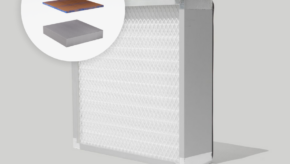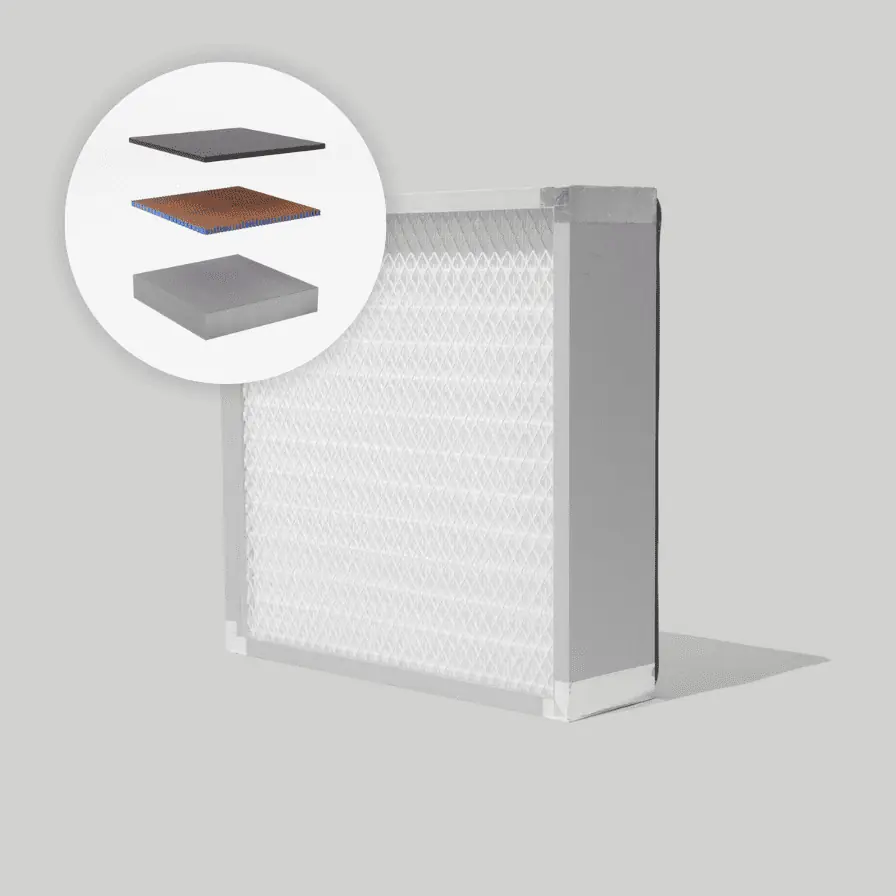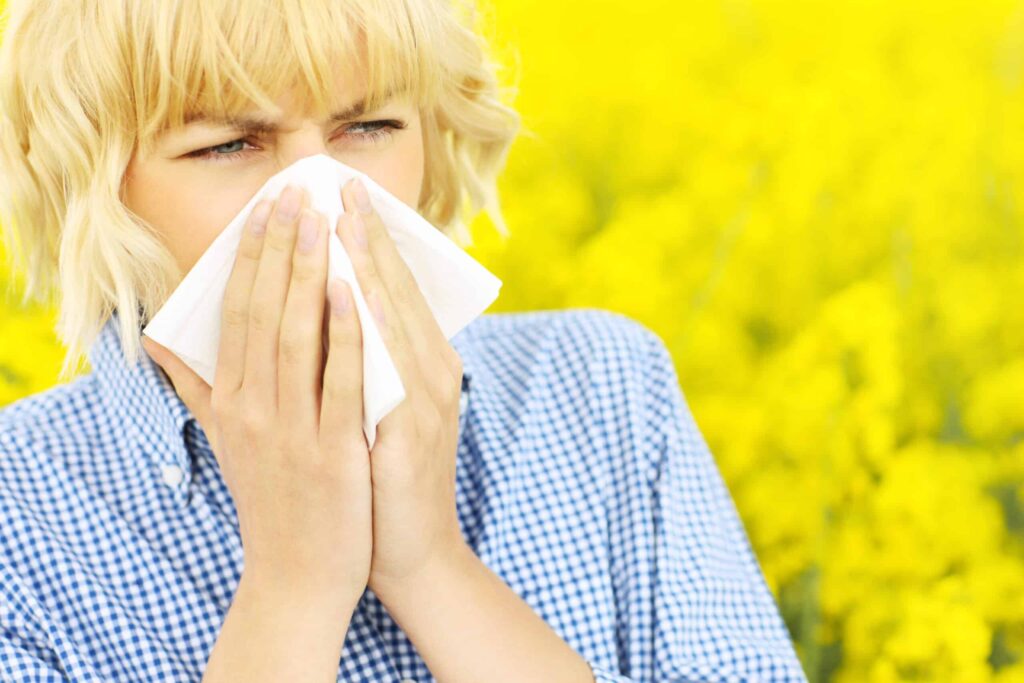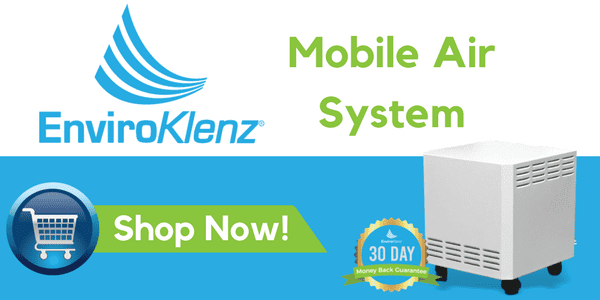Pollen is a powdery substance emitted from a plant’s microscopic male gametophytes and is intended to fertilize (or pollinate) female ovules of the same plant. Pollen relies on nature to get where it needs to go. It is transported to its intended destination either by the wind or insect pollinators, such as bees and butterflies.
On a microscopic level, pollen grains can appear smooth, spiky, or granular. Pollen consists of two separate layers: the outer wall called exine and the inner wall called intine. The inner layer consists of genetic material, and the outer layer is designed for protection.

What Is Pollen?
Pollen that is moved from place to place by insects is relatively harmless to allergy sufferers. It is pollen spread by the wind that triggers those who suffer from pollen sensitivities. Plants that rely on pollen to be spread by the wind are referred to as anemophilous. Anemophilous plants tend to produce much higher amounts of pollen that is necessary for reproduction because depending on wind is less reliable than depending on insects or birds to directly transport pollen. Although using wind ensures that some of the pollen will get to where it needs to go, it results in a high amount of excess pollen in the air.
Pollen is extremely lightweight, and it floats around quite effortlessly in the air. It sometimes even travels in large, visible clouds. When pollen counts are high, there is a greater amount of pollen in the air than usual. If counts are low, there is a reduced risk of excess pollen being present.
What Are Pollen Allergies?

Many people suffer from allergy symptoms at particular times of the year. These symptoms are often an allergic reaction to pollen that is in the air. “Hay fever” is a term commonly used to describe a pollen allergy, although the term is usually associated specifically with ragweed.
Sufferers of pollen allergies can experience a range of symptoms including watery eyes, sore throat, rhinitis, coughing, sneezing, and/or increased mucus production. Effects can also range in severity: some may be merely annoyed by mild reactions, while others may be so negatively affected by the pollen in the air that they have a hard time even being outside. Pollen allergy symptoms do not significantly impact children younger than 5 years of age but can have an effect on older children and adults.
Varying climates can make a difference in the severity of pollen allergy symptoms. Pollen sensitive individuals living in an area with high temperatures, low humidity, and a lot of wind, are at a greater risk of exposure to high concentrations of pollen in the air and, ultimately, enflamed pollen allergy symptoms. Alternatively, those in more humid climates, with increased precipitation, live in an area where pollen is more frequently washed out of the air, reducing the risk of exposure to airborne pollen and offering symptom relief.
Many weather services report on the pollen levels in different cities each day. Called a “pollen count,” these reports usually predict pollen levels for the upcoming week and can be a good resource for pollen sensitive individuals to use as an indicator of their exposure risk if spending time outdoors. Those regularly taking antihistamines or other medications for allergies may find it helpful to follow the forecasted pollen count and to proactively adjust the medication they will need to take to combat pollen-related symptoms.
What Kind of Pollen Am I Allergic To?
Both coniferous and flowering plants (and even some grasses) produce pollen. Not everyone who suffers from pollen allergies are sensitive to the same types of pollens. It is possible to be more susceptible to one specific type of pollen, and not others. It is also possible to experience allergy symptoms related to chemical sensitivities and to mistake that sensitivity for a pollen allergy. This is more likely the case if the majority of your symptoms are experienced while indoors.
One way to determine what is triggering your symptoms is to pay attention to your reactions. Your reactions, and even the times of year you get them, will vary depending on which pollen or substance you are allergic to. It is a good idea to keep track of both your symptoms and when you experience them in order to pinpoint the cause.
An allergist can determine what specific pollen or chemical you are allergic to. This is usually done by conducting a skin test in which a small patch of skin is tested for several allergens at the same time. For this test, a numbered grid is drawn on the skin with a washable marker. A different diluted allergen is then pricked into the top layer of skin in each grid square, and the areas are observed to see if there is a reaction. If there is, the specialist can then determine how severe the allergy is and pinpoint the exact cause of the symptoms.
Tips To Reduce Indoor Allergens:
Unfortunately, you might not always find relief just by going indoors; even if your allergies are primarily triggered by pollen. Indoor environments can trap quite a bit of allergen and, unlike outdoor allergens, these have nowhere to escape to and can build up over time. Other substances like mold, mildew, and bacteria can also accumulate in damp indoor environments. These spores can cause you to become ill or experience allergy symptoms.
Common indoor allergens are also present in the dust found in your home. Allergens that makeup dust include dust mites, pet dander, fabric fibers, mold spores, and other airborne materials. Human hair and skin particles, as well as insect fragments, can also induce allergy symptoms. Pollen may even make its way indoors. If you have indoor plants, the pollen from those can exacerbate allergy problems. Indoor allergens are usually present on a year-round basis but may worsen symptoms particularly during cold weather when windows are shut and there is less ventilation. Even if you do leave your windows open, allergens can get in from outside.
Below are some tips to lessen the negative effects of indoor allergens:
- Regularly wash bedding in hot water and use hypoallergenic pillowcases or mattress covers to control dust mites
- Use a HEPA equipped vacuum that will trap pet dander and other particulates
- Run a dehumidifier—allergens like mold thrive in humid environments
- Clean kitchens and bathrooms on a regular basis
- Change your clothes after spending time outdoors if the pollen count is high
- Dust on a regular basis
- Change filters on AC and heating systems regularly
- De-clutter your home to reduce the places allergens have to hide
- Choose hardwood floors over carpet
Keeping your home generally clean and de-cluttered is an important step toward diminishing the negative effects of indoor allergens, as well as outdoor allergens that may be tracked inside. Even when using a room air purifier for dust, mold, dander, and other allergens will continue to make their way into the air, carpet, walls, and other objects. It is important to use cleaning in addition to other solutions to maintain maximum air quality.
The Benefits of HEPA Filters Against Allergens

While it is true that indoor environments can be just as bad for allergy sufferers as being outdoors, there is one solution that can improve indoor air quality and reduce allergens present. Certain air filters can catch allergy-inducing particulates as they circulate in the air. HEPA filters, in particular, are effective at fighting against allergens.
HEPA is an acronym for High-Efficiency Particulate Air. It is a mechanical technology used in air filters. For a filter to be classified as HEPA, it must meet certain qualifications set forth by the US Department of Energy. To meet their standards, HEPA filters must effectively catch 99.7% of particulates that are 0.3 microns or larger (a micron is one-millionth of a meter. For size comparison, a strand of hair is around 100 microns wide).
HEPA filters are effective in trapping potential allergens like pollen, hair, tobacco smoke, and dust mites because of the way they operate. As air flows through the filter, it uses a very fine mesh to catch large particles. The mesh consists of randomly arranged fibers, typically made up of fiberglass or a similar material.
HEPA filters use a process of interception, impaction, and diffusion to catch pollutants:
- Interception – The pollutant sticks to the fibers in the filter
- Impaction – Large particles collide with the fibers and get stuck between them
- Diffusion – Smaller particles attempt to pass through the filter and are delayed as they meet molecules from the filter
Coupled with maintaining a clean and clutter-free home, using a HEPA filter and air purifier on a regular basis can drastically reduce the number of allergens in the treated area. Most allergy sufferers see a dramatic improvement in symptoms after using a HEPA filter; sometimes in as little as a few days.
HEPA filters and purifiers can typically clean the air in a radius equivalent to one or two rooms. When purchasing a HEPA filter and/or air purifier, it is important to make sure the product you are considering will cover the radius of the area that you need to be treated.
Air Purifier For Allergens and Allergy Triggers
Since HEPA technology was introduced in the second half of the 20th century, it has been used in many industries and functions. One of its primary applications has been in residential air purifiers. Although there are many air purifiers on the market that utilize HEPA technology, they are not all equally effective in ridding the air of allergens and allergy-triggering irritants.
The best air purifier for allergy sufferers is the EnviroKlenz Mobile. This air purifier combines HEPA technology with its proprietary technology. Each EnviroKlenz-Air Cartridge includes a blend of minerals designed to not only trap larger particulates and Volatile Organic Compounds (VOC’s) but to neutralize them and any odors they may produce.
Some people who have symptoms consistent with allergies may actually be experiencing exposure to chemical irritants. These can be present in the home in the resulting from tobacco smoke, off-gassing from electronics or other new products, or chemical cleaners and fragrances. The EnviroKlenz Mobile is designed to catch both the allergens and the irritants and to neutralize them. Its technology effectively “deactivates” harmful chemicals, and traps allergens like pollen, dander, or mold so they can no longer circulate in the air.
Other air purifiers using HEPA air filters can be useful in reducing a number of allergens in your home, but they will not offer the same level of relief that the EnviroKlenz Mobile does. Other air purifiers utilize carbon technology to store harmful chemical odors and VOCs at the source of a filter. This, however, is a temporary solution because the harmful substances that the carbon catches can easily be released back into the environment. TheEnviroKlenz’s mobile air purifier utilizes a two-stage filtration process that not only filters particulates such as pollen and dander but also neutralizes and eliminates chemicals and the odors that accompany the chemicals.
The EnviroKlenz Mobile is perfect for homes and businesses and is built on casters allowing it to be wheeled around from room to room. The system utilizes a patented earth mineral technology that works to take the chemical odors and malodors into the cartridge where it attacks and neutralizes the molecular structure of the contaminants without releasing any chemicals or masking agents back into the environment. The system is built to cover a radius of 850 feet (which is equivalent to 2-3 rooms in a home), and contains a blower with 4 speeds ranging from a whisper to high, giving the user control of how much air they would like exchanged in that room. Its lowest setting runs almost silently, and the medium to high settings produce minimal sound.
If you suffer from allergies throughout the year, whether from indoor or outdoor triggers, the EnviroKlenz Mobile is the best option for quick and lasting relief and comprehensive air purification. For a limited time, you can click below to learn more about relieving your allergy symptoms and to take advantage of the spring offer.
Our Recommended Solution…
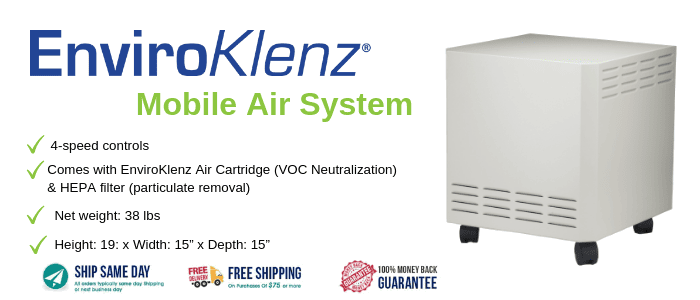
The EnviroKlenz Mobile Air System is your solution to removing VOCs and chemical pollutants from your indoor environment. With the use of a hospital-grade HEPA filter and an effective earth mineral technology air cartridge, this two-stage filtration is perfect to place in your indoor space to mitigate potential hazards to your health. Whether you have chemical sensitivities, allergies, or are just looking to improve your indoor air quality, the EnviroKlenz Mobile Air System is your answer!
- Simple and Easy to Set-Up, with Minimal Maintenance
- Replace Air Cartridge every 4 to 6 Months
- HEPA Filter Replaced Every Two Years
- Quiet Operation, 4-Speed Motor
- No Chemical Odors Released!
We are confident that our EnviroKlenz Technology will drastically reduce the odors in your home, if it doesn’t live up to your expectations, we will issue a full refund within 30 days of your purchase!
Click below to buy NOW!

